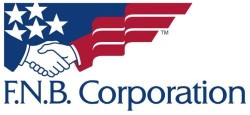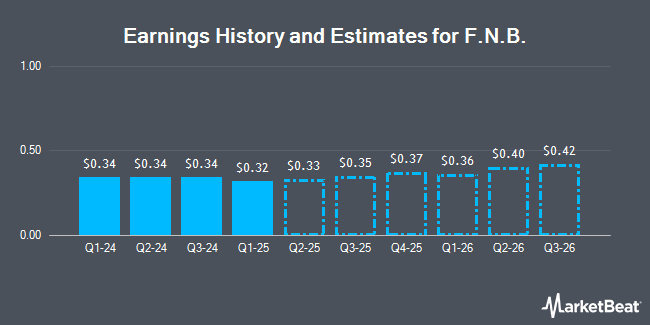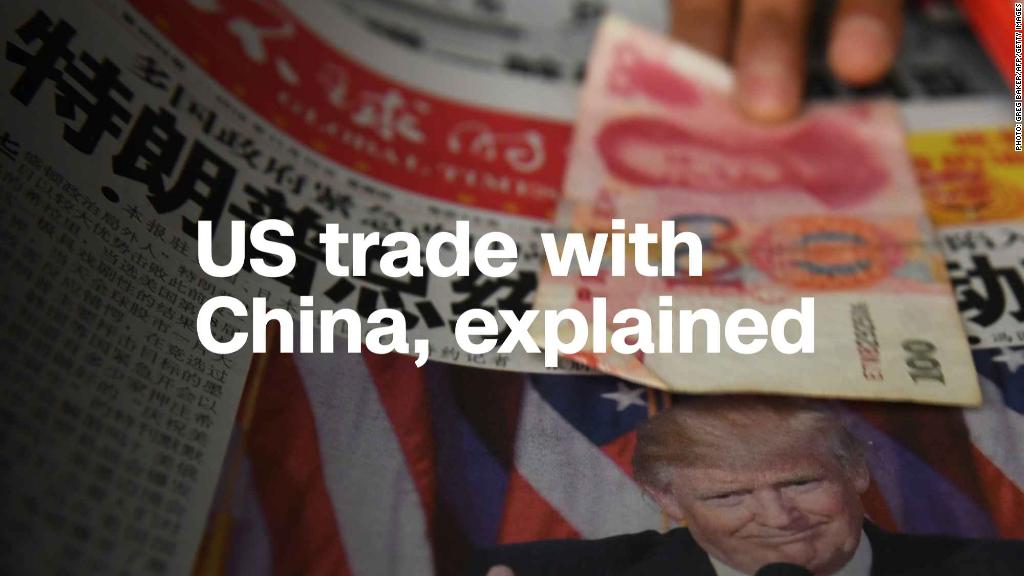 Equities analysts predict that FNB Co. (NYSE:FNB) will post earnings per share (EPS) of $0.27 for the current quarter, according to Zacks. Seven analysts have issued estimates for FNB’s earnings, with the lowest EPS estimate coming in at $0.26 and the highest estimate coming in at $0.28. FNB posted earnings per share of $0.23 during the same quarter last year, which indicates a positive year over year growth rate of 17.4%. The firm is expected to announce its next quarterly earnings report on Thursday, July 19th.
Equities analysts predict that FNB Co. (NYSE:FNB) will post earnings per share (EPS) of $0.27 for the current quarter, according to Zacks. Seven analysts have issued estimates for FNB’s earnings, with the lowest EPS estimate coming in at $0.26 and the highest estimate coming in at $0.28. FNB posted earnings per share of $0.23 during the same quarter last year, which indicates a positive year over year growth rate of 17.4%. The firm is expected to announce its next quarterly earnings report on Thursday, July 19th.
According to Zacks, analysts expect that FNB will report full year earnings of $1.12 per share for the current financial year, with EPS estimates ranging from $1.09 to $1.15. For the next financial year, analysts expect that the business will post earnings of $1.24 per share, with EPS estimates ranging from $1.21 to $1.30. Zacks Investment Research’s EPS averages are a mean average based on a survey of analysts that that provide coverage for FNB.
Get FNB alerts:
FNB (NYSE:FNB) last released its quarterly earnings data on Tuesday, April 24th. The bank reported $0.26 earnings per share (EPS) for the quarter, hitting the consensus estimate of $0.26. FNB had a return on equity of 7.37% and a net margin of 19.72%. The firm had revenue of $294.00 million during the quarter, compared to analyst estimates of $298.63 million. During the same period in the prior year, the company posted $0.23 earnings per share. The business’s revenue for the quarter was up 29.0% compared to the same quarter last year.
A number of equities analysts have issued reports on FNB shares. ValuEngine upgraded FNB from a “hold” rating to a “buy” rating in a report on Wednesday, March 7th. Zacks Investment Research raised FNB from a “hold” rating to a “buy” rating and set a $15.00 target price for the company in a research report on Friday, April 6th. Boenning Scattergood reissued a “buy” rating on shares of FNB in a research report on Tuesday, April 24th. TheStreet cut FNB from a “b” rating to a “c+” rating in a research report on Tuesday, April 17th. Finally, Keefe, Bruyette & Woods reiterated a “hold” rating and issued a $15.00 price target on shares of FNB in a research report on Wednesday, April 25th. One investment analyst has rated the stock with a sell rating, five have issued a hold rating, five have assigned a buy rating and one has issued a strong buy rating to the stock. FNB presently has a consensus rating of “Buy” and a consensus price target of $16.29.
FNB stock traded down $0.01 during mid-day trading on Tuesday, hitting $13.56. 1,966,925 shares of the company were exchanged, compared to its average volume of 2,230,293. The company has a debt-to-equity ratio of 0.15, a current ratio of 0.82 and a quick ratio of 0.82. FNB has a 1-year low of $12.02 and a 1-year high of $14.91. The firm has a market capitalization of $4.39 billion, a P/E ratio of 14.58, a P/E/G ratio of 1.27 and a beta of 0.90.
The firm also recently disclosed a quarterly dividend, which will be paid on Friday, June 15th. Investors of record on Friday, June 1st will be paid a dividend of $0.12 per share. This represents a $0.48 annualized dividend and a yield of 3.54%. The ex-dividend date is Thursday, May 31st. FNB’s dividend payout ratio is 51.61%.
In other news, Director Mary Jo Dively purchased 3,000 shares of the company’s stock in a transaction on Friday, May 11th. The stock was purchased at an average price of $13.40 per share, with a total value of $40,200.00. Following the completion of the purchase, the director now directly owns 5,200 shares in the company, valued at approximately $69,680. The transaction was disclosed in a legal filing with the SEC, which is available through this hyperlink. Also, Chairman Stephen J. Gurgovits purchased 4,070 shares of the company’s stock in a transaction on Thursday, May 17th. The shares were purchased at an average cost of $13.52 per share, with a total value of $55,026.40. Following the purchase, the chairman now owns 256,329 shares of the company’s stock, valued at $3,465,568.08. The disclosure for this purchase can be found here. Insiders have purchased 10,770 shares of company stock valued at $145,250 in the last three months. 0.63% of the stock is owned by corporate insiders.
A number of hedge funds have recently modified their holdings of the business. Principal Financial Group Inc. lifted its stake in FNB by 2.8% during the first quarter. Principal Financial Group Inc. now owns 1,411,593 shares of the bank’s stock worth $18,986,000 after purchasing an additional 37,977 shares during the last quarter. Moors & Cabot Inc. lifted its stake in FNB by 28.8% during the first quarter. Moors & Cabot Inc. now owns 17,928 shares of the bank’s stock worth $241,000 after purchasing an additional 4,010 shares during the last quarter. Xact Kapitalforvaltning AB lifted its stake in FNB by 35.5% during the first quarter. Xact Kapitalforvaltning AB now owns 39,331 shares of the bank’s stock worth $529,000 after purchasing an additional 10,300 shares during the last quarter. Royal Bank of Canada lifted its stake in FNB by 1.4% during the first quarter. Royal Bank of Canada now owns 2,849,468 shares of the bank’s stock worth $38,326,000 after purchasing an additional 39,539 shares during the last quarter. Finally, Barrow Hanley Mewhinney & Strauss LLC lifted its stake in FNB by 36.7% during the first quarter. Barrow Hanley Mewhinney & Strauss LLC now owns 11,698,305 shares of the bank’s stock worth $157,342,000 after purchasing an additional 3,139,400 shares during the last quarter. 79.39% of the stock is owned by hedge funds and other institutional investors.
About FNB
F.N.B. Corporation, a financial holding company, provides a range of financial services primarily to consumers, corporations, governments, and small- to medium-sized businesses. The company operates through four segments: Community Banking, Wealth Management, Insurance, and Consumer Finance. It offers commercial banking solutions, including corporate and small business banking, investment real estate financing, business credit, capital market, and lease financing services.
Get a free copy of the Zacks research report on FNB (FNB)
For more information about research offerings from Zacks Investment Research, visit Zacks.com

 Equities analysts predict that FNB Co. (NYSE:FNB) will post earnings per share (EPS) of $0.27 for the current quarter, according to Zacks. Seven analysts have issued estimates for FNB’s earnings, with the lowest EPS estimate coming in at $0.26 and the highest estimate coming in at $0.28. FNB posted earnings per share of $0.23 during the same quarter last year, which indicates a positive year over year growth rate of 17.4%. The firm is expected to announce its next quarterly earnings report on Thursday, July 19th.
Equities analysts predict that FNB Co. (NYSE:FNB) will post earnings per share (EPS) of $0.27 for the current quarter, according to Zacks. Seven analysts have issued estimates for FNB’s earnings, with the lowest EPS estimate coming in at $0.26 and the highest estimate coming in at $0.28. FNB posted earnings per share of $0.23 during the same quarter last year, which indicates a positive year over year growth rate of 17.4%. The firm is expected to announce its next quarterly earnings report on Thursday, July 19th.
 Renewable Energy Group Inc (NASDAQ:REGI) was the target of some unusual options trading activity on Thursday. Stock traders acquired 728 call options on the company. This is an increase of approximately 522% compared to the average daily volume of 117 call options.
Renewable Energy Group Inc (NASDAQ:REGI) was the target of some unusual options trading activity on Thursday. Stock traders acquired 728 call options on the company. This is an increase of approximately 522% compared to the average daily volume of 117 call options.
 US trade with China, explained
US trade with China, explained  Nutanix (NASDAQ:NTNX) has been assigned a consensus recommendation of “Buy” from the twenty-four research firms that are covering the firm, Marketbeat Ratings reports. Three analysts have rated the stock with a sell rating, two have given a hold rating and nineteen have issued a buy rating on the company. The average 1-year price target among analysts that have updated their coverage on the stock in the last year is $52.53.
Nutanix (NASDAQ:NTNX) has been assigned a consensus recommendation of “Buy” from the twenty-four research firms that are covering the firm, Marketbeat Ratings reports. Three analysts have rated the stock with a sell rating, two have given a hold rating and nineteen have issued a buy rating on the company. The average 1-year price target among analysts that have updated their coverage on the stock in the last year is $52.53.  24/7 Wall St.
24/7 Wall St.